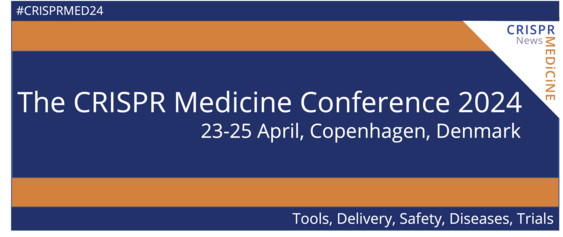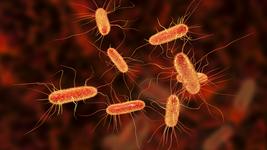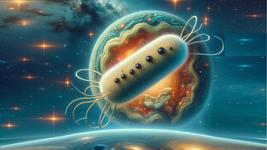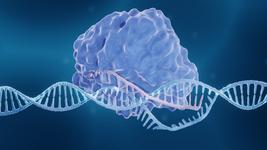Gene therapy against lethal chemical warfare nerve agents
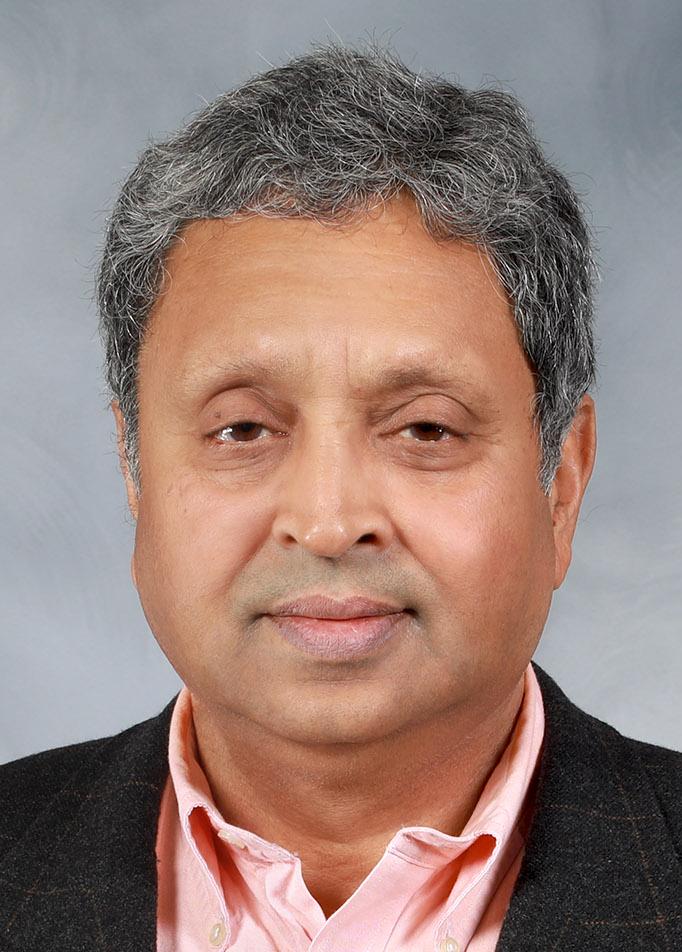
In a new study, US Army researchers describe how a single injection of a gene therapy successfully protects mice from lethal chemical warfare nerve agents such as sarin for up to five months. The new gene therapy could be one of the first possible treatments that provide long-lasting preventative protection against nerve agents, which can pose a considerable danger for soldiers in war zones.
»We are very happy, it's a great thing,« says the lead researcher Nageswararao Chilukuri at the US Army Medical Research Institute of Chemical Defense.
Protect before exposure
Sarin is one of several organophosphates called G-type nerve agents that was first synthesized by nazi scientists in Germany in the 1930-40's. They have been used in terrorist attacks and conflicts such as the Syrian civil war. Sarin and other G-type nerve agents are notorious for being 'invisible' - colorless and odorless - extraordinarily deadly and difficult to treat: those who are exposed need to be treated within minutes to hours to survive, and current antidotes can't prevent debilitating complications like brain damage.
So ideally, treatment would protect people long before exposure. That is why Nageswararao Chilukuri and colleagues thought to engineer a virus to deliver a gene for a scavenger protein, which can quickly 'disarm' the nerve agents before they cause their toxic effect.
»All living mammals have an enzyme called paraoxonase 1 - PON1 - which we know is very good as a bioscavenger against nerve agents in terms of offering protection,« says Chilukuri.
»The problem is these enzymes don't last long and are eliminated quickly in the body.«
An efficient scavenger enzyme
That could be overcome by continuously producing large quantities of the enzyme in the blood using gene therapy. However, the parent PON1 enzyme hydrolyzes the nerve agents very slowly, so Nageswararao Chilukuri took note a few years ago when a research group at the Weizmann Institute in Israel by Dan S. Tawfik made a recombinant PON1 enzyme that revs up the activity against G-type nerve agents by hundreds and thousands folds. That variant, PON1-IF11, combines bits of sequence from rabbit, mouse, and human as well as adding in some mutations.
Using PON1-IF11, Chilukuri and colleagues first developed the gene therapy with an adenovirus system but then learned about new products using AAV (adeno-associated virus) viral vector system, which unlike adenovirus doesn't integrate into the host DNA and therefore is considered much safer.
Using AAV as delivery vehicle
After talking to AAV-experts at the University of Pennsylvania, they decided to use the AAV8 vector and the liver-specific thyroxine-binding globulin promotor.
»Because PON1 is naturally made in the liver, we thought that would be ideal for human gene expression,« explains Chilukuri.
»So using the adenovirus system we had developed, we applied it to the AAV gene therapy system. To our surprise and delight, we started to see the PON1 level of activity in the mice blood three days after the virus injection.«
G-type nerve agents
Tabun is the first of the G-series nerve agents along with GB (sarin), GD (soman), and GF (cyclosarin) that were invented and synthesized by nazi chemists during the 1930-40s. They are colorless, odorless and tasteless, and extremely deadly. The chemicals can enter the bloodstream through the skin, food, and drink, or by inhalation, and cross the blood-brain barrier.
In the central nervous system, they irreversibly inhibit a key enzyme, acetylcholinesterase, and disrupt normal communication between brain and muscles, causing involuntary urination and defecation, seizures, and rapid death from respiratory failure.
Japanese Aum Shinrikyo religious cult made and used sarin several times, most notably the Tokyo subway sarin attack in 1995, and in 2013 sarin gas was deployed in an attack on Ghouta during the Syrian Civil War.
High expression levels
It worked tremendously well with the mice expressing milligram levels of enzyme activity.
»It was great because we want a lot of enzyme activity. And we saw the levels remain nearly the same for at least five months. We didn't measure it beyond, but I think it's probable that the enzyme levels existed beyond five months and could have been as long as the mice lived,« says Chilukuri.
The mice seemed to tolerate the high levels of PON1-IF11 variant, they act like normal mice and don't seem to be sick. And all parameters measured - blood composition, chemistry, immunology - appear to be the same as control mice.
Unharmed by nerve agents
The ultimate test, of course, was challenging the mice with the nerve agents. They tested four G-type agents - sarin, soman, cyclosarin, and tabun - giving a subcutaneous injection of 5 times LD50, which is a huge dose that kills a normal mouse in less than 30 seconds.
»These PON1-IF11 mice tolerate it and behave as if nothing happened to them,« says Chilukuri.
»They have so much of the enzyme, that I think they could have tolerated even higher doses of the nerve agents.«
The protection stayed as long as the protein, so had mice been soldiers, they would have been able to tolerate a chemical gas attack.
»Yes, but we are a long way from thinking about applying this to humans. Because we don't know the long term safety of the AAV virus system,« says Chilukuri.
Future genetically modified soldiers
He points out that soldiers are all healthy persons contrary to other gene therapy applications using the AAV system that are all in terminally ill persons. One could, of course, argue that soldiers risking going into a war zone where nerve agents are a real danger, could be comparable to the lower safety needs for terminally ill patients.
»Without knowing anything about the long term effects of this gene therapy system, I hesitate to think that far. Safety has to be number one. It must be safe for the lifetime of the person, and it should not cause any side effects what so ever,« Chilukuri says.
He says there are several safety concerns to consider fx it is a controversy if the AAV vector can integrate into the human genome and cause mutations. Another big concern is immunogenicity, not least since PON1-IF11 is part rabbit, part mouse, and part human.
The researchers only saw a little bit of antibody production, which might be due to the high levels of protein.
»But in humans, we don't know - it could be it is more antigenic, and a lot more research would be needed before we could give it to soldiers,« Chilukuri says.
Tags
CLINICAL TRIALS
Sponsors:
National Institute of Allergy and Infectious Diseases (NIAID)

